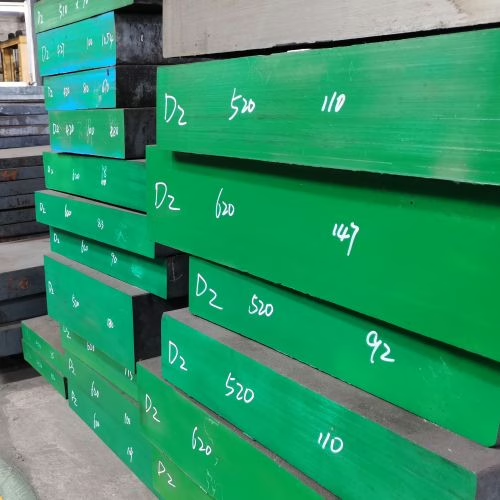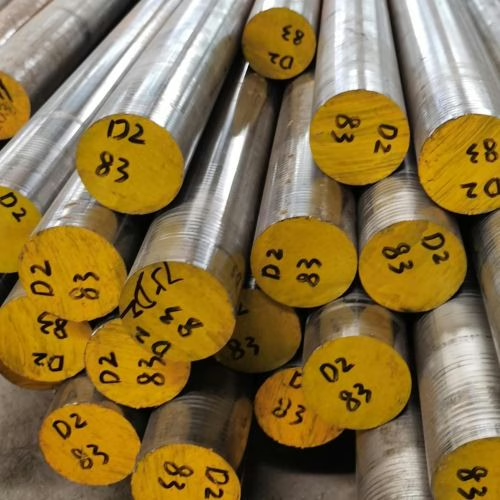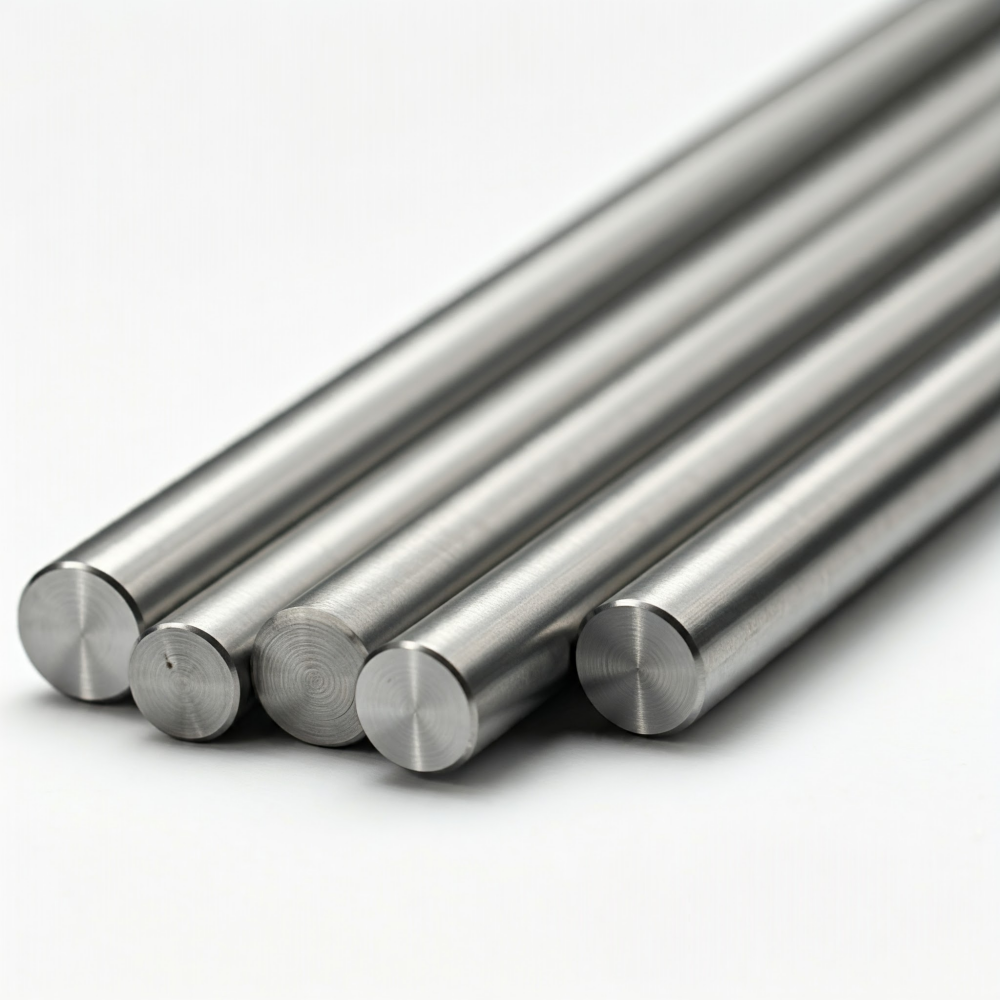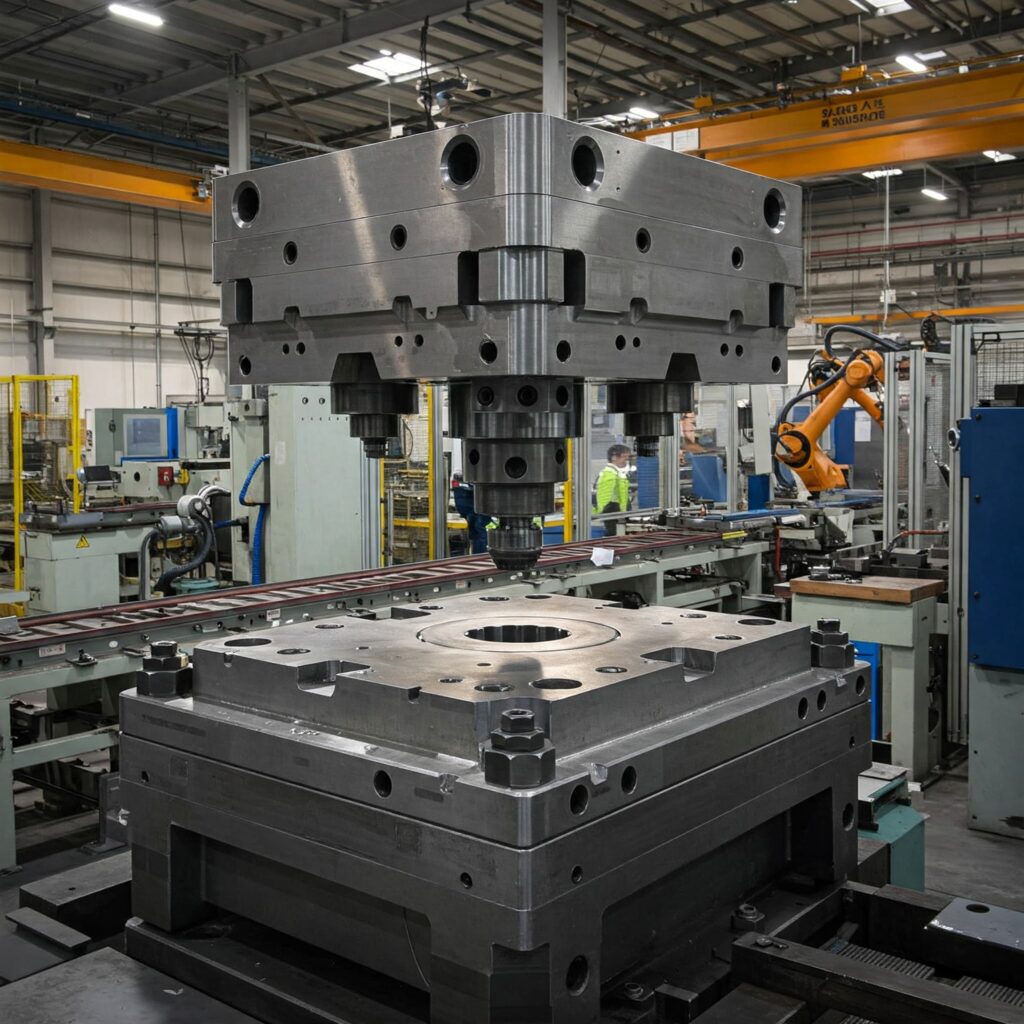فولاذ الأدوات هو فولاذ متخصص مصمم لتصنيع وتشكيل وقطع المعادن والبلاستيك في ظل ظروف قاسية. من بينها، فولاذ الأدوات D2 يبرز D2 كعنصر أساسي في تطبيقات التشكيل البارد، إذ يتميز بصلابة عالية، ومقاومة ممتازة للتآكل، وثبات أبعادي ممتاز بعد المعالجة الحرارية. ستتناول هذه المقالة تركيب D2 وخصائصه الأساسية، وتُحلل الدور الحاسم للمعالجة الحرارية، وتقترح أفضل الممارسات لتحسين أدائه في عمليات تشكيل المعادن الشائعة مثل الختم، والقطع، والسحب، والبثق البارد.
عادةً ما تبدأ المقالات من هذا النوع بتقديم تركيب فولاذ D2. بما أننا نشرنا بالفعل مقالات ذات صلة بهذا الموضوع، يُرجى الرجوع إلى دراسة متعمقة لتركيب الفولاذ D2لن تكرر هذه الورقة نفس النقاط.
المعالجة الحرارية: إطلاق العنان لإمكانات D2
لماذا المعالجة الحرارية أمر ضروري: تعمل المعالجة الحرارية على تعزيز الخصائص الميكانيكية لمادة D2 بشكل كبير، بما في ذلك صلابة، ومقاومة التآكل، والقدرة على مقاومة التشوه أو الكسر في ظل ظروف الأحمال العالية. بدون المعالجة الحرارية المناسبة، لا يمكن لفولاذ الأدوات D2 تحقيق الأداء الأمثل، وهو معرض بشدة للفشل المبكر، وهو السبب الجذري الأكثر شيوعًا لهذه المشاكل. تعتمد قدرة فولاذ الأدوات على تحقيق أقصى أداء على فوائد المعالجة الحرارية.
عملية من ثلاث خطوات للحصول على الأداء الأقصى: تتضمن المعالجة الحرارية لـ D2 عادةً عملية دقيقة من ثلاث مراحل: الأوستنيت (التصلب)، والتبريد، والتخمير.
سبق أن نشرنا مقالاً عن المعالجة الحرارية لفولاذ D2، ولن نكرره هنا. إذا كنت مهتماً بالمعالجة الحرارية لفولاذ D2، يمكنك الرجوع إلى: كيفية المعالجة الحرارية الصحيحة لفولاذ D2.


تحسين قوالب D2 لتطبيقات تشكيل المعادن المحددة
يعتمد اختيار فولاذ الأدوات لعمليات التشكيل على موازنة مقاومة التآكل والمتانة والصلابة الحرارية اللازمة للتشكيل الساخن. يجمع فولاذ D2 هذه الخصائص بإتقان، مما يجعله متعدد الاستخدامات لمختلف تطبيقات التشكيل البارد. إضافةً إلى ذلك، تؤثر عوامل مثل التأثير الميكانيكي، والصدمات الحرارية، ومقاومة التآكل، وحجم الإنتاج، جميعها على اختيار مادة القالب.
التطبيق 1: قوالب الختم والتفريغيُستخدم فولاذ الأدوات D2 على نطاق واسع في قوالب الختم والقطع طويلة الأمد، نظرًا لمقاومته الاستثنائية للتآكل وثبات أبعاده. صلادته العالية (60-62 HRC) وجزيئاته الكربيدية الكبيرة تُمكّنه من تحمّل الصدمات الشديدة وقوى الكشط المتأصلة في هذه العمليات. كما تُحسّن تقنيات معالجة الأسطح، مثل النترتة الأيونية، صلابة سطح قوالب D2 ومقاومتها للتآكل، مما يُطيل عمرها الافتراضي في الإنتاج بكميات كبيرة.
التطبيق 2: قوالب الرسم والرسم العميقيُعدّ فولاذ D2 خيارًا شائعًا لقوالب السحب والسحب العميق، خاصةً في دورات الإنتاج الطويلة. في هذه العمليات، تُجبر أداة الثقب المعدن المسطح على دخول تجويف القالب لتشكيل أوعية مجوفة سلسة. تُعدّ صلابة فولاذ الأدوات D2 العالية ومقاومته الممتازة للتآكل أمرًا بالغ الأهمية للحافة الداخلية للقالب (نصف قطر السحب)، والتي تقاوم تدفق المعدن الكاشط وتتحكم بفعالية في تشوه المادة. كما أن ثبات أبعاد مادة D2 بالغ الأهمية، مما يضمن تناسق ودقة هندسة الأجزاء.
التطبيق 3: قوالب البثق البارديُستخدم فولاذ الأدوات D2 بكثرة في قوالب البثق البارد والمثاقب. يتضمن البثق البارد تشويه المعدن بلاستيكيًا عن طريق دفعه عبر فتحة القالب، مما يُعرّض القالب لضغوط دورية عالية جدًا وتآكل شديد. غالبًا ما تُشدّ حشوات القالب مسبقًا بحلقات انكماش لتحمل الضغوط الشديدة داخل تجويف القالب، مما يمنع تشوهه البلاستيكي. ونظرًا لضغوط التشكيل النوعية العالية جدًا (التي تصل إلى 2370 ميجا باسكال أو 344 كيلو باسكال عند المثقاب)، فإن مواد القوالب المتينة مثل D2 لا غنى عنها للحفاظ على عمر الأداة.
أفضل ممارسات التصنيع: التشغيل والطحن D2
تتطلب عملية تصنيع القوالب من الفولاذ D2 تقنيات متخصصة بسبب خصائصه المتأصلة.
- قابلية التصنيع: يُعتبر الفولاذ D2 من الفولاذ الذي يصعب تشغيله آليًا نظرًا لارتفاع نسبة الكروم والكربون فيه. ويُعتبر تصنيف قابليته للتشغيل الآلي أقل بكثير من تصنيف الفولاذ الكربوني العادي (مثلًا، 45 مقارنةً بـ 100). عادةً ما يُورَّد فولاذ الأدوات في حالة التلدين الناعم لتسهيل عمليات التشغيل الآلي.
- طحن: غالبًا ما يكون الطحن هو عملية التشكيل النهائية، وهو بالغ الأهمية لتحقيق تشطيب السطح المطلوب ودقة الأبعاد. ومع ذلك، قد تؤدي عجلات الطحن أو إجراءاتها غير الصحيحة إلى خدوش وتشققات سطحية، والتي قد تنتشر وتؤدي إلى تعطل الأداة عند تعرضها لضغوط تشغيلية. يُنصح بشدة باستخدام مادة مُخففة للإجهاد بعد الطحن المكثف.
- معالجة التفريغ الكهربائي (EDM): تُعد عملية التفريغ الكهربائي (EDM) تقنية قيّمة لإنشاء سمات معقدة وفتحات عميقة وضيقة في فولاذ D2 المُقسّى. ومع ذلك، قد تُنتج عملية التفريغ الكهربائي "طبقة بيضاء" هشة على السطح، وهي شديدة الصلابة (غالبًا ما تكون HRC+70) ولكنها أيضًا عُرضة للتشققات الدقيقة. إذا لم تُزال هذه الطبقة أو تُخفف إجهادها بشكل صحيح، فقد تُسبب تآكلًا حراريًا أو نقرًا أو تشققًا أثناء الاستخدام. لذلك، يُعدّ تخفيف الإجهاد بعد عملية التفريغ الكهربائي أمرًا بالغ الأهمية.
- الطلاءات السطحية: لتعزيز مقاومة التآكل وتأخير ظهور التشققات، غالبًا ما تخضع أدوات D2 لمعالجات سطحية مثل النترتة الأيونية أو طلاءات مثل نتريد التيتانيوم (TiN) وكربيد التيتانيوم (TiC). تزيد هذه الطلاءات من صلابة السطح بشكل ملحوظ، مما يُسهم في إطالة عمر الأداة.
الخلاصة: المادة المناسبة، العملية المناسبة
يُعد فولاذ الأدوات D2 مادةً أساسيةً في تشكيل المعادن، إذ يتميز بتوازنٍ استثنائي بين الصلابة العالية ومقاومة التآكل وثبات الأبعاد. هذا يجعله خيارًا موثوقًا به لقوالب الختم والسحب والبثق عالية المتطلبات. ويتحقق الأداء الأمثل لفولاذ D2 من خلال المعالجة الحرارية المناسبة وعمليات التشغيل القياسية، مثل القطع الدقيق والطحن وتشطيب الأسطح. ويضمن الالتزام بهذه الممارسات الفضلى إطالة عمر الأدوات وتقليل معدلات الأعطال، مما يُحقق في نهاية المطاف كفاءةً اقتصاديةً عاليةً وجودةً فائقةً في إنتاج القطع المعدنية.


